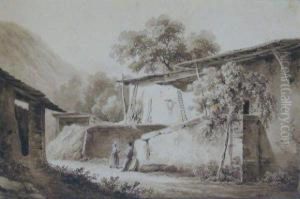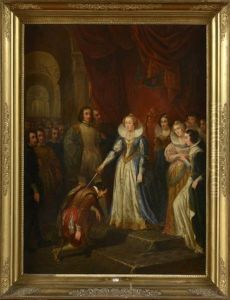Edouard Van Marcke Paintings
Édouard Van Marcke was a French artist known for his skillful depiction of animals, particularly cattle. Born on March 2, 1827, in Sèvres, a suburb of Paris, he was intimately connected to the world of fine arts from an early age. Van Marcke's father worked at the famous Sèvres porcelain factory, which likely provided him with an early exposure to artistic craftsmanship and aesthetics.
Although initially trained to follow in his father's footsteps at the factory, Van Marcke's artistic talents led him to pursue painting. He began his studies under Jean-Baptiste Camille Corot, a leading figure of the Barbizon School, which focused on realism and nature in art. He later became a student of Constant Troyon, a noted animal painter. Under Troyon's guidance, Van Marcke developed his own style, focusing on pastoral scenes with a particular emphasis on capturing the essence and anatomy of bovine subjects.
Van Marcke's works were characterized by their realism and attention to detail, particularly in the rendering of animals' fur and the lush landscapes that served as backdrops for his scenes. He exhibited at the Paris Salon, the official art exhibition of the Académie des Beaux-Arts in Paris, from 1857 onwards, and his work gained recognition and popularity. He received medals at the Salons of 1867, 1869, and 1870, and was awarded the Legion of Honor in 1872.
Throughout his career, Van Marcke remained dedicated to the subject matter that had brought him acclaim. His paintings often depicted the rural life that was rapidly changing during the industrialization of France. His ability to evoke the peacefulness of rural landscapes and the noble simplicity of farm animals resonated with a public that was increasingly nostalgic for the countryside.
Édouard Van Marcke died on January 10, 1890, in Hyères in the south of France. His legacy is that of a master animalier, with works that continue to be appreciated for their technical prowess and serene beauty. Today, his paintings can be found in many major museums around the world, serving as enduring examples of nineteenth-century French animal painting.

